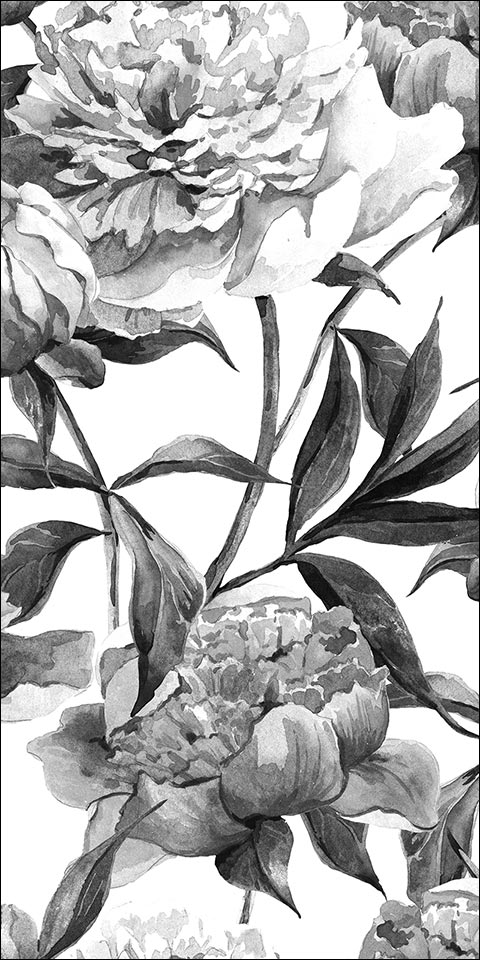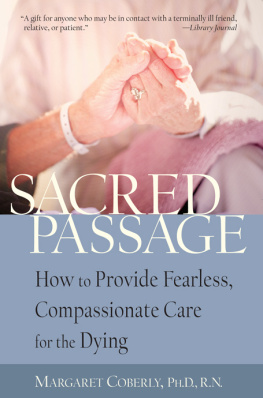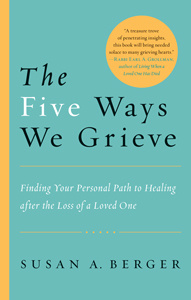Spiritual Perspectives on Death andDying
by Bernice H. Hill, Ph.D.
Luminous Moon Press, Boulder, CO
Copyright 2015 Bernice H. Hill. All RightsReserved.
Published by Luminous Moon Press, Boulder,CO
No parts of this book may be reproduced inany form or by any electronic or mechanical means, includinginformation retrieval systems, without prior written permissionfrom the author.
Cover photo Starry night sky and Milky Wayover Jackson Lake and Tetons copyright Royce Baird.
Cover and interior layout and design byCarolyn Oakley, Luminous Moon Design.
Smashwords Edition, License Notes
This ebook is licensed for your personalenjoyment only. This ebook may not be re-sold or given away toother people. If you would like to share this book with anotherperson, please purchase an additional copy for each recipient. Ifyoure reading this book and did not purchase it, or it was notpurchased for your use only, then please return to Smashwords.comand purchase your own copy. Thank you for respecting the hard workof this author.
Acknowledgements
Over the years, many people have contributedto this gathering of thoughts and reflections. In particular, Iwould like to thank Ann Allegre, Stephanie Bendel, Celia Coates,Paul and Mimi Hansen, Jeffrey Kiehl, Jane Kircher, DonnaMitchell-Moniak, and Joy Om. I would like to give a special note ofappreciation to Carolyn Oakley for her preparation of the materialfor publication.
Table of Contents
Epilogue
Bibliography
A man should be able to say he has done hisbest to form a conception of life after death or to create someimage of it Not to have done so is a vital loss.
Carl Jung
Memories, Dreams and Reflections
Introduction: The Gathering Clouds

It was a watershed moment. My heart beatfaster when I saw where the letter had come frommy doctor. Then,in professional language, the message, simple and direct: Yourrecent mammogram showed several irregularities. Please call toschedule a follow-up appointment.
A geographical watershed is a high point oflandall rivers become divided. On one side, they may flow east andon the other, west. Psychologically, it is an awakening.Consciousness suddenly finds itself in a whole new reality, flowingin a different direction.
These writings stem from that moment. At age79, I was shocked by the diagnosis of invasive breast cancer thatfollowed. I could no longer pretend I was aging gracefully.Suddenly, I was no longer immortal.
The time had come to face this profoundlymysterious and threatening future: a threshold faced by all. Overthe years I had witnessed others going through this doorway; heardmany stories of their passages, but now it was my turn. This wasdifferent. Real and immediate!
My approach was typical for me; I wanted anoverview. Not so much of the progress of breast cancer, but themore important wake-up call of facing death.
I would gather everything I could find on thesubjectthe full range of ideas, theories, philosophicalapproaches, personal stories and courageous antidotes.
The following chapters trace that endeavor,and I have come to realize that it was a task that had been waitingfor me for years.
Chapter 1
Carl Jung

In the spring of 1993, I drove to the houseof a patient of mine who was very ill with bowel cancer. The quiet,tidy green squares of suburban lawn curved around the corner wherehe lived. The sun glowed through the new green leaves and Iwondered what it must feel like to be dying, when the warm earthwas just coming back.
Betty answered the door and led us down thehall. Bob was talking to the Hospice nurse, so I mustered thosethings one says to an anxious wife. Memories of the angry maritalsessions between them floated through my mind. The nurse left.
Bob was weary and a bad color. I said I wouldgo, but he motioned for me to sit down. With great effort, hehoisted himself to his feet and headed for the bathroom. Shortlythereafter, there was a cry. Betty rushed to him, calling for myhelp. The weakened man drooped on the toilet, breathing hard. Thegray-green color of his face deepened. Betty, pale as slate, wastrying to hold him.
The man was heavy on our arms. With my face afew inches from his head, I could see the beads of sweat on hisforehead and smell the stale odors of bedclothes and tired body.Fear gripped Betty.
Talk to him, I said. This angry woman, whorarely had anything positive to say, started murmuring, I loveyou, Bob. You have been a fine husband and a wonderful father.Things will be all right! She stroked the damp, bald, head.
Bob gave one long labored sigh and his bodyslumped. In awkward ways, we just held him, saying nothing. Later,we laid the body on the floor, covered it and called for help. As Icontemplated this death, I remembered how often Betty had said shewas terrified that Bob would die in their bed in the middle of thenight and then she would be alone! In bed with Death! This thoughthaunted her and yet, here we were together with something rathersimple.
It was an amazing day for me, for thatafternoon I had interviews with three committees for acceptanceinto a rigorous national training program to become a Jungiananalyst. As would be expected for those interested in the work ofC. G. Jung, their first question was Did you have any dream lastnight before these interviews? I swallowed hard when I rememberedwhat it was:
I am in the backyard of my house. There is astone wall there about four feet high. On it is inscribed:
Beneath the wide and starry sky,
Lay me down and let me die,
Home is the sailor, home from the sea.
And the hunter home from thehills.
To the right of this wall stood Christ,looking very weary and frustrated with me!
Of course, the committee wanted to know whatI made of this. Why the theme of death and why was Christfrustrated with me? I was totally surprised by the whole turn ofevents. I had been brought up in a Christian home; my Protestantparents were respectful of those beliefs. Why was it important forme to have a clearer understanding of death as the natural order ofthings?
In retrospect, my entry into the Jungiantraining program was a tremendous opportunity to address thesepersonal issues, for Carl Jung was fascinated by death.
I was drawn to the work of Carl Jung becauseof his strong belief that life was meaningful. Of all those whohave set themselves the task of exploring the human psyche, Jungstands out as a man with strong faith that there was fundamentalpurpose in the souls journey.
Nowhere was this more evident than in hisapproach to death. The reality of death in everyones life sets thestage for basic questions. Are we moved, over the course of life,toward some deeply sensed goal? Or, are we just driven by ego,physical and sexual needs? If it is useful for the spiritual personto see death as a goal, then aging and approaching death should bethe focus, in the second half of life, for meditativereflection.
Jungs great gift was to show that withineach of us is a process whereby we can open to and dialogue withthe vast, rich storehouse of the unconscious. Here are the ancientarchetypes of death and rebirth found in cultures around the earthand across time.
Communing with the symbols and visions thatarise from the unconscious, we are given insights about ourshortcomings and their role in the panorama of human dilemmas. Hereis where we can find balance and, unexpectedly, profound guidance.Here is the dialogue that nudges us toward maturity.













